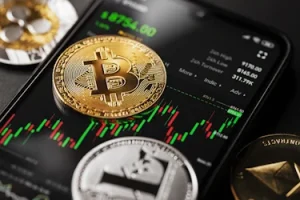
Welcome to the exciting world of cryptocurrency. This guide will make your adventure a little smoother from the outset, giving you a solid foundation to make informed decisions about buying and selling digital currencies.
You’ll uncover the various ways where you can buy, sell, and trade your favorite coins and tokens. We also explain the differences between crypto platforms, crypto exchanges and crypto brokers below. And, we’ll give you the lowdown on various strategies and give you some (hopefully) helpful hints and tips to get you on your way.
Before we dive into the nitty gritty of where and how to buy and sell, a quick trip to the Crypto Lists University is in order. We’ll go into detail about some of the exchanges we’re familiar with and explain everything you need to know to begin your crypto journey. So, get your pens and notebooks out because it’s about to get heavy with knowledge!
In the Beginning…
God created crypto. Indeed, before you get started it’s important to understand what makes crypto different from fiat, and get a solid understanding of the basics of crypto currencies. After all, you can’t trade it if you don’t really understand it.
Before you start looking for exchanges, let’s get our learning hats on. Crypto is a type of digital or virtual currency that uses cryptography for security. Bitcoin, the first and most well-known cryptocurrency, was introduced in 2009. Since then, thousands of alternative cryptocurrencies (aka altcoins) have been developed, each with its own unique features and uses.
These digital assets operate on technology called blockchain, which is a decentralized technology spread across many computers that manage and record transactions. The lack of a centralized authority like a government or bank makes cryptocurrencies theoretically immune to government interference or manipulation.
Springboard to Success
Now, when you first dip your toes into the crypto waters, you’ll come across three key places of business: platforms, exchanges, and brokers. While they all function as a gateway to the crypto world, they each have their unique perks and quirks. So, let’s break it down, shall we?
Crypto Platforms – Think of crypto trading platforms as your digital entry point. These are user friendly interfaces to smoothly buy/sell/stake crypto. Sometimes we call these crypto apps and they’re often the kinds of places first-time market entrants begin when buying Bitcoin for the first time.
Crypto Exchanges – Exchanges, on the other hand, are like the stock markets of the crypto world. They act as intermediaries, facilitating transactions between buyers and sellers. They offer a plethora of cryptocurrencies to trade and are known for their liquidity and real-time trading features. In a nutshell they provide more advanced user interfaces, and have more features, e.g. buying and selling with limit orders.
Crypto Brokers – There are two types. Type one are the the middlemen who buy and sell cryptocurrencies on your behalf. More often, particularly on Crypto Lists, we’re referring to advanced exchanges that offer trading crypto based on paper crypto. This allows for leveraged trading, and is more focused on day traders with high-level Technical Analysis and graph trading software.
While they all cater to crypto trading, the main differences lie in the level of user control, the range of tools and services offered, and the fees charged. So, your choice between a platform, an exchange, or a broker will largely depend on your trading style, your crypto knowledge, and your risk tolerance. We’ll go into more detail about these three options just below.
Crypto Platforms: Simple With No Fuss
A crypto platform is primarily a good alternative if you want to buy or sell the underlying crypto asset as a beginner or if you want to easily manage your cryptos.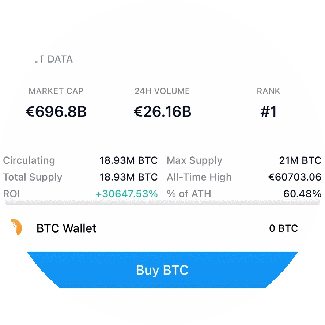
This is where you can buy/sell/stake various cryptos in a straight forward way. You just need to focus on whether you want to buy or sell and the amount and your order will be automatically filled by the crypto platform to whatever cost/spread that means, through a market order.
When doing so you normally buy or sell the crypto at market price. This normally comes at a higher spread cost compared to when using a Crypto Exchange, as explained below.
See our unbiased reviews of all the best crypto platforms here.
Below are the top 3 ranked crypto platforms in your region. Check out our reviews by clicking the logo.
Crypto Exchanges: Unlock Advanced Features
A crypto exchange is a trading platform where you buy/sell the underlying crypto asset, i.e. the coin or token itself. 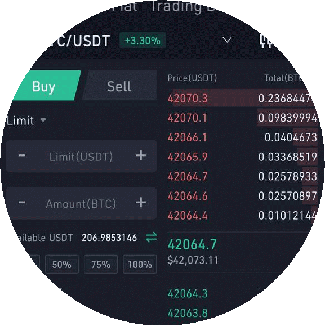 At a Crypto Exchange you can see all the current buy and sell orders from the various buyers and sellers on the same exchange.
At a Crypto Exchange you can see all the current buy and sell orders from the various buyers and sellers on the same exchange.
If you for example use the Crypto.com Exchange you will be able to see the number of sellers at a certain price level vs. how many buyers at a different price level. This allows you to set a limit order when buying or selling your crypto (i.e. only executing the order to buy or sell the crypto at a certain price). Very similar to what you see when you are trading stocks.
Many of the platforms discussed above also function as exchanges. So it’s not actually as complicated as it may appear at first glance. For example, Coinbase has an ‘Advanced Trade’ section that’s for people who want to use the main Coinbase platform but take advantage of advanced features. This used to be on a separate site called ‘Coinbase Pro’, but in late 2022 they merged the two sites together.
Check out the overview with the in-depth review of all top crypto exchanges here.
Below are the top 3 ranked crypto exchanges in your region. Check out the exchange by clicking the logo.
Crypto Brokers: CFDs with Leverage
Crypto brokers are platforms where you primarily can trade crypto papers, e.g. CFD crypto (contract for difference). This could be a good alternative if you prefer to trade crypto short term, and often with a leverage, giving both higher risk and opportunities.
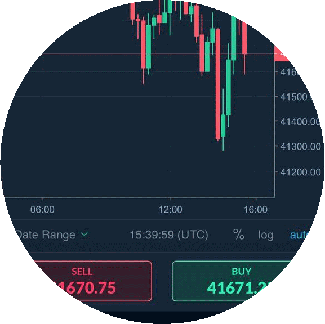 Remember that crypto is already very volatile and having too much of a leverage would be extremely risky. Examples of brokers where you can trade crypto with a leverage are Skilling or StormGain.
Remember that crypto is already very volatile and having too much of a leverage would be extremely risky. Examples of brokers where you can trade crypto with a leverage are Skilling or StormGain.
Crypto Brokers typically also offer trading with sophisticated software interfaces, like Metamask 4, Metamask 5 or cTrader. This allows for more advanced technical analysis of various tokens, coins and other financial instruments. Cryptocurrency brokers with CFD trading are not allowed in the U.S, but are common in Europe and Asia.
See all our independent reviews of crypto brokers here.
The below brokers are the top 3 ranked ones in your region. Check out the broker review by clicking the logo.
Decentralized Exchanges: Discover Niche Assets
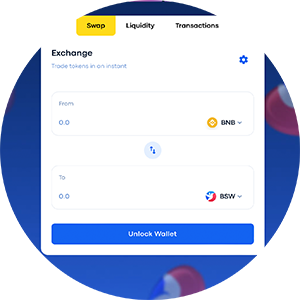 So far, we’ve only looked at centralized exchanges (CEX). Alternatively, you can use a DEX for your crypto investments, which is short for Decentralized Exchange.
So far, we’ve only looked at centralized exchanges (CEX). Alternatively, you can use a DEX for your crypto investments, which is short for Decentralized Exchange.
Decentralized exchanges are cryptocurrency platforms where trades occur directly between users (peer-to-peer) without the need for an intermediary. They operate on blockchain technology, ensuring transparency and security of transactions.
Unlike centralized exchanges, DEXs don’t control users’ funds, meaning traders maintain custody of their assets, reducing the risk of theft from hacking. Additionally, since they operate globally on a distributed network, DEXs are resistant to regulation and censorship. However, they are currently less user-friendly and have lower trading volumes and liquidity compared to centralized exchanges.
See the toplist with reviews of DEXes here.
The decentralized exchanges below are the top 3 ranked ones in your region. Check out the review by clicking the logo.
Creating an Account
Your first step into the world of crypto trading involves setting up an account on a trading site. With this, you’ll get a crypto wallet and various addresses. A crypto wallet is where you store your digital assets, while the type of site you use will be one of the ones above.
For the purposes of breity, we’ll just call all of them ‘exchanges’ for the duration of this guide.

There are several reputable exchanges like Coinbase app, Binance, and Kraken. Choosing the right one depends on factors such as security, user interface, fees, and the types of cryptocurrencies available. And, of course your personal requirements that encompass tons of things inlcuding your location, design preferences and so on.
- Choose Your Exchange: The first step on your cryptocurrency journey is to choose your exchange. There are many out there, each with their unique features and benefits. Some important factors to consider are security, fees, the range of available cryptocurrencies, and user-friendliness. Do your research, read reviews, and find an exchange that suits your needs.
- Sign Up: After you’ve found your perfect match, it’s time to sign up. Navigate to the exchange’s website and look for the ‘Sign Up’ or ‘Register’ button. It’s usually prominently displayed on the homepage.
- Fill in Your Details: Now, you’ll need to fill in your details. Most exchanges will ask for your full name, email address, and a password. Some might also require a phone number. Make sure to use a strong, unique password to protect your account.
- Verify Your Email: After you’ve filled in your details, the exchange will usually send a confirmation email to the address you provided. Check your inbox, open the email and click on the verification link. This confirms that the email address belongs to you.
- Complete KYC Process: After verifying your email, you might need to complete a Know Your Customer (KYC) process. This is a legal requirement for many exchanges and involves providing a form of identification, like a passport or driving license. The exchange will provide instructions on how to do this.
- Secure Your Account: Now that your account is set up, it’s crucial to secure it. Enable two-factor authentication (2FA) if it’s available. This adds an extra layer of security by requiring a second form of verification, usually through your phone.
- Deposit Funds: Congratulations! You’re almost there. The final step is to deposit funds into your account. Look for a ‘Deposit’ or ‘Fund Your Account’ option in the exchange’s interface. Follow the instructions to deposit your chosen currency.
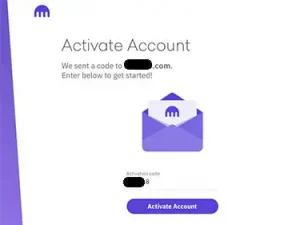
Understanding Market Orders and Limit Orders
In the world of cryptocurrency trading, two common types of orders exist: market orders and limit orders. Understanding these orders is crucial to successfully navigate and participate in the dynamic and volatile world of decentralized exchanges.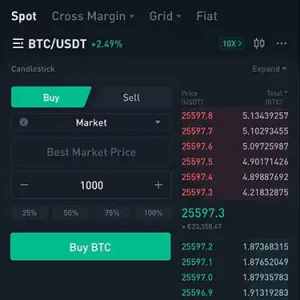
Market Orders
A market order is a type of order that allows you to buy or sell a cryptocurrency at the best available price in the market. The aim of a market order is to ensure that the trade is executed as quickly as possible. Market orders are generally used when the execution of the trade is prioritized over the price at which the trade is executed.
It’s important to note that while market orders are executed instantly, the final executed price may not be the exact price that was displayed when the order was placed. This is due to the volatility of the cryptocurrency market.
Limit Orders
Unlike market orders, a limit order is an order to buy or sell a cryptocurrency at a specific price or better. This means that you set a particular price limit for the trading of a certain cryptocurrency. If the market price doesn’t reach the limit price, the order will not be executed.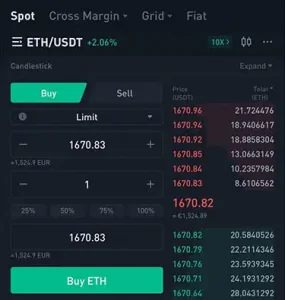
Limit orders are commonly used when traders believe that the price of a cryptocurrency will reach a certain level in the future. They provide more control over the price at which the trade is executed, but there’s a risk that the order will not be fulfilled if the cryptocurrency’s price does not reach the specified limit.
Choosing Between the Two
The choice between a market order and a limit order depends on your needs and the specific market conditions. If speed is a priority and you’re willing to trade at any current market price, a market order is the ideal choice. However, if you prefer to control the price and is willing to wait for the market to reach the set price, a limit order would be more suitable.
It’s crucial to remember that both types of orders come with their own set of risks. Market orders could lead to trades at prices far from the expected price, especially in volatile markets. On the other hand, limit orders might not be executed if the price does not reach the set limit.
In conclusion, understanding market and limit orders is fundamental in cryptocurrency trading. This knowledge will hopefully help you to make smarter decisions and utilize the right type of order for your trading strategies on exchanges.
Exploring Trading Strategies
That leads us nicely to this section. So, different strategies have evolved to cater to varying risk appetites, trading styles, and time commitments. In this part, we’ll delve deep into three popular trading strategies: day trading, swing trading, and HODLing. It should be noted that crypto day trading is seriously risky, since the market often move more rapidly than the stock market and forex market. Crypto Lists sees the best opportunities for cryptocurrencies as long term investments, where you spread out the risk between a few different coins and tokens and don’t bet everything on one.
Get the Books Out
Okay, okay, perhaps in today’s world you’re good with just the internet. But, there have been some very good books written about trading currencies, and some about crypto specifically. Ultimately, it’s all the same since you’re reading and reacting to the market. One favourite from Markus J is called Fibonacci Trading: How to master the time and price advantage and another is Cryptocurrency Investing: Step by Step Guide to Benefit from Crypto by Investing Long Term.
The world of cryptocurrency is vast, and it can be easy to get lost in the multitude of coins available for trade. Before diving in, do your homework and be prepared to go in long-term. Understand the technology behind the coin, its use case, the team behind it, and its market trends. Websites like Crypto Lists can be valuable resources.
The crypto market is incredibly dynamic, and things can change in the blink of an eye. We can’t reiterate enough how crucial it is to stay updated on market news and trends.
Day Trading
Day trading is a strategy that involves buying and selling cryptocurrencies within the same trading day. The objective is to profit from short-term price fluctuations. Day traders typically use technical analysis and charting tools to predict market trends and make decisions.
Key characteristics of day trading include:
- High frequency of trades: Day traders make multiple trades each day, aiming to capitalize on small price movements.
- Short holding period: Cryptocurrencies bought are typically sold within the same day, reducing exposure to overnight market volatility.
- Requires time and attention: Day trading is time-consuming and requires constant market monitoring.
While day trading can be profitable, it’s also risky and requires a good understanding of the market. It’s not recommended for beginners or those who cannot afford to lose their investment.
Swing Trading
Swing trading is a medium-term trading strategy that aims to capture significant price movements over a period of a few days to weeks. Swing traders hold onto their cryptocurrencies longer than day traders but shorter than HODLers.
Key characteristics of swing trading include:
- Relies on technical and fundamental analysis: Swing traders study price patterns and market trends, and also consider broader economic factors that might affect the cryptocurrency’s price.
- Requires patience: Swing traders wait for the right market conditions before entering a trade.
- Less time-consuming: Unlike day trading, swing trading doesn’t require constant market monitoring.
Swing trading can be a good strategy for those who can’t commit to the time demands of day trading but still want to actively manage their portfolio.
HODLing
HODLing (Hold On for Dear Life in crypto slang) is a long-term investment strategy where the investor buys and holds a cryptocurrency regardless of market volatility, with the expectation that its price will rise over the long term.
Key characteristics of HODLing include:
- Based on belief in the cryptocurrency’s long-term potential: HODLers believe the value of their cryptocurrency will increase over time, despite short-term market fluctuations.
- Requires patience: HODLing can involve holding a cryptocurrency for months or years.
- Low maintenance: HODLing requires little active management once the investment is made.
HODLers should be prepared for the possibility that the value of their cryptocurrency may fall and may not recover for a long time, if at all.
Risk Management: Moon or Doom
Before you start dreaming about those Lamborghinis and moonshots, let’s have a little chat about something called ‘Risk Management.’ Yep, it might sound a bit boring, but trust us, it’s absolutely crucial.
n the simplest terms, it’s about not putting all your eggs in one basket. Diversification is key! You wouldn’t want a single bad trade to wipe out your entire investment, would you? Of course not. So, spread your investments across different cryptocurrencies.
Setting Stop Losses
This is a lot like setting a safety net. If the trade doesn’t go as expected, the stop-loss order will automatically sell your position at a predetermined price. This way, even if things go south, you’re not going to lose everything. It’s all about limiting potential losses.
Know Your Limits
Never invest more than you can afford to lose. Crypto trading is very volatile, and while you might see some folks striking it rich, remember that there are many others who aren’t as lucky. If you’re investing money that you can’t afford to lose, you’re going to be trading with emotions, and that’s a recipe for disaster.
Understanding Technical Analysis (TA)
So you’ve got your account set up, you’ve assessed all the potential risks, and now you’re ready to dive into the world of crypto trading. But before you get started, there’s something pretty crucial you need to get your head around, and that’s Technical Analysis, or TA for short.
TA is like the crystal ball of crypto trading. It’s a tool used by traders to predict future price movements based on historical data. Sounds fancy, doesn’t it? But don’t worry, we’ll break it down.
First off, technical analysis is all about spotting patterns and trends in price charts. The crypto market, much like any other market, tends to move in patterns or trends. These can be upward (bullish), downward (bearish), or sideways. The idea is to identify these trends, jump in at the right time, and hopefully make a profit before the trend reverses.
One of the most common tools in TA is the moving average, which is basically the average price of a crypto over a certain period. It helps smooth out price fluctuations and gives you a clearer picture of the overall trend. If the price is above the moving average, it’s typically a bullish sign, and if it’s below, it’s bearish.
Spotting the indicators
Then there are indicators like Relative Strength Index (RSI) and Moving Average Convergence Divergence (MACD). RSI measures the speed and change of price movements and can help identify if a crypto is overbought or oversold. MACD, on the other hand, is used to spot potential buy and sell signals.
And let’s not forget about candlestick charts. These guys can seem a bit intimidating at first, with their wicks and bodies, but once you get the hang of them, they can be incredibly useful. They provide a lot of information on price movements in a given period and can help you spot potential reversals in the trend.
Nothing Is Certain but Death and Taxes
Lastly, don’t forget the legal side of things. Unfortunately, yes, cryptocurrencies are indeed taxable. Many people initially thought otherwise because of the decentralized nature of cryptocurrencies. However, most tax authorities, categorize cryptocurrencies in a similar way to property or stocks for tax purposes.
When you trade or sell cryptocurrencies, you’re likely triggering a taxable event. Capital gains and losses rules apply.
If you’ve held the crypto for more than a year before selling or trading, the gains are generally considered long-term and are taxed at a lower rate. Less than a year, then it’s typically considered short-term and is taxed at your ordinary income rate. But, this really does depend on your jurisdiction.
You can see our in-depth, country-by-country tax guide here.

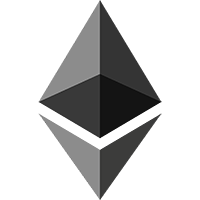
















 Binance launch new subsidiary firm in Ireland
Binance launch new subsidiary firm in Ireland























